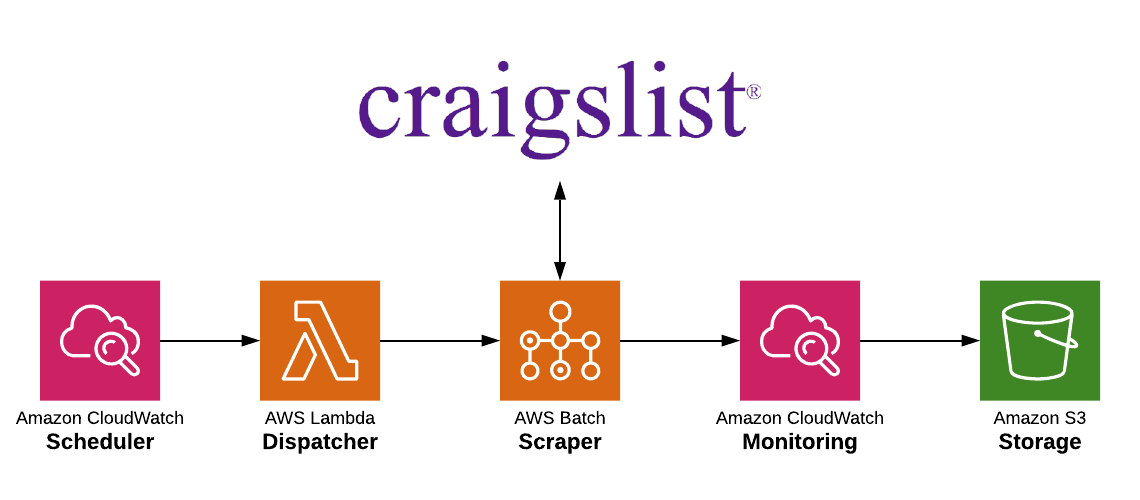
Unfortunately, some of it is hard to access programmatically. It’s as easy as that What can Web Scraper be used forInformation is everywhere online. Lastly, launch the scraper and export scraped data. Add data extraction selectors to the sitemap 4. Install the extension and open the Web Scraper tab in developer tools (which has to be placed at the bottom of the screen) 2.
Then, we’ll store the data in CSV format for further use.That’s where web scraping can come into play. In this example, we will scrape Footshop for some nice sneaker models and their prices. Choose the page you want to scrape. Next, we will be going through the steps to creating our web scraper. Now you know why web scrapers and Python are cool. Itll cover data.Create Your Own Web Scraper.

Lastly, everything we have learned so far will be applied to a case study in which we will acquire the data of all companies in the portfolio of Sequoia Capital, one of the most well-known VC firms in the US. Typical Use Case: Scraping Amazon Reviews.While you could scrape data using any other programming language as well, Python is commonly used due to its ease of syntax as well as the large variety of libraries available for scraping purposes in Python.After this short intro, this post will move on to some web scraping ethics, followed by some general information on the libraries which will be used in this post. Scrapy, which can be thought of as more of a general web scraping framework, which can be used to build spiders and scrape data from various websites whilst minimizing repetition. Typical Use Case: Websites which use Javascript or are otherwise not directly accessible through HTML. Using tools ordinarily used for automated software testing, primarily Selenium, to access a websites‘ content programmatically.
Web Scraping EthicsOne factor that is extremely relevant when conducting web scraping is ethics and legality. Note that the tools above are not mutually exclusive you might, for example, get some HTML text with Scrapy or Selenium and then parse it with BeautifulSoup. Since the standard combination of Requests + BeautifulSoup is generally the most flexible and easiest to pick up, we will give it a go in this post.
For that, the following section will come in handy. We here at STATWORX don’t condone any illegal activity and encourage you to always check explicitly when you’re not sure if it’s okay to scrape something. It tends to depend on the specific data you are scraping.In general, websites may ban your IP address anytime you are scraping something they don’t want you to scrape. Not legal under all circumstances).

If there is a general URL which is disallowed, it is overwritten if a more specific URL is allowed (e.g. Only certain parts of a search are allowed, such as „about“ and „static“. Check it out for yourself, since it is much longer than shown below, but essentially, no bots are allowed to perform a search on Google, specified on the first two lines. Incidentally, they also offer an API that is quite easy to use, so if you really needed information from HN, you would just use their API.Refer to the Gist below for the robots.txt of Google, which is (obviously) much more restrictive than that of Hackernews. This makes sense when you consider the mission of Hackernews, which is mostly to disseminate information. Scraping threads and their contents) is fair game, as long as you respect the crawl delay.
Write Your Own Webscraper Code Can Also
Use Case 1: API RequestsThe Gist above shows a basic API request directed to the NYT API. The status code can also tell you why your request was not served, for example, that you sent too many requests (status code 429) or the infamous not found (status code 404). Ideally, you want your status code to be 200 (meaning your request was successful). You can find a useful overview of status codes here. Generally, Requests has two main use cases, making requests to an API and getting raw HTML content from websites (i.e., scraping).Whenever you send any type of request, you should always check the status code (especially when scraping), to make sure your request was served successfully. RequestsRequests is a Python library used to easily make HTTP requests.
Use Case 2: ScrapingThe following lines request the HTML of Wikipedia’s page on web scraping. You have to select which data is relevant for you. Therefore, you will still have to „parse“ this data a bit before you actually have it in a table format which can be represented in e.g.
BeautifulSoupBeautifulSoup is a Python library used for parsing documents (i.e. This is where BeautifulSoup comes in. This is usually not very useful, since most of the time when scraping with Requests, we are looking for specific information and text only, as human readers are not interested in HTML tags or other markups.
This allows you to match arbitrary sections of almost any webpage. Figure 1: Finding HTML elements on Wikipedia using the Chrome inspector.This kind of matching is (in my opinion), one of the easiest ways to use BeautifulSoup: You simply specify the HTML tag (in this case, span) and another attribute of the content which you want to find (in this case, this other attribute is class). Try it out for yourself!As you can see below, you can easily find the class attribute of an HTML element using the inspector of any web browser. All headlines in the Contents section at the top of the page. Using Requests to obtain the HTML of a page and then parsing whichever information you are looking for with BeautifulSoup from the raw HTML is the quasi-standard web scraping „stack“ commonly used by Python programmers for easy-ish tasks.Going back to the Gist above, parsing the raw HTML returned by Wikipedia for the web scraping site would look similar to the below.In this case, BeautifulSoup extracts all headlines, i.e.
Write Your Own Webscraper How To Work With
For more detailed information on the Inspector, the official Google website linked above contains plenty of information.Figure 2 shows the basic interface of the Inspector in Chrome. The workflow in the case study should give you a basic idea of how to work with the Inspector. All of these can be helpful or even necessary in the scraping process (especially when using Selenium). InspectorAs a short interlude, it’s important to give a brief introduction to the Dev tools in Chrome (they are available in any browser, I just chose to use Chrome), which allows you to use the inspector, that gives you access to a websites HTML and also lets you copy attributes such as the XPath and CSS selector.


 0 kommentar(er)
0 kommentar(er)
